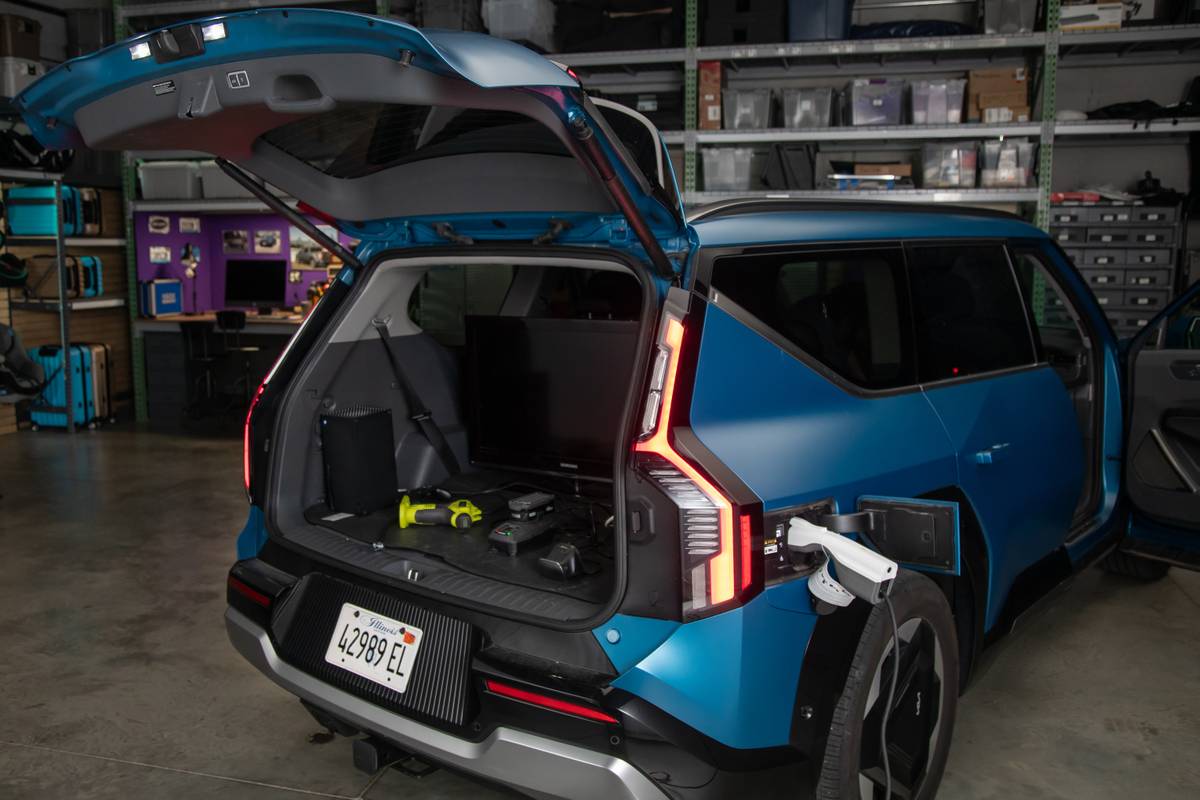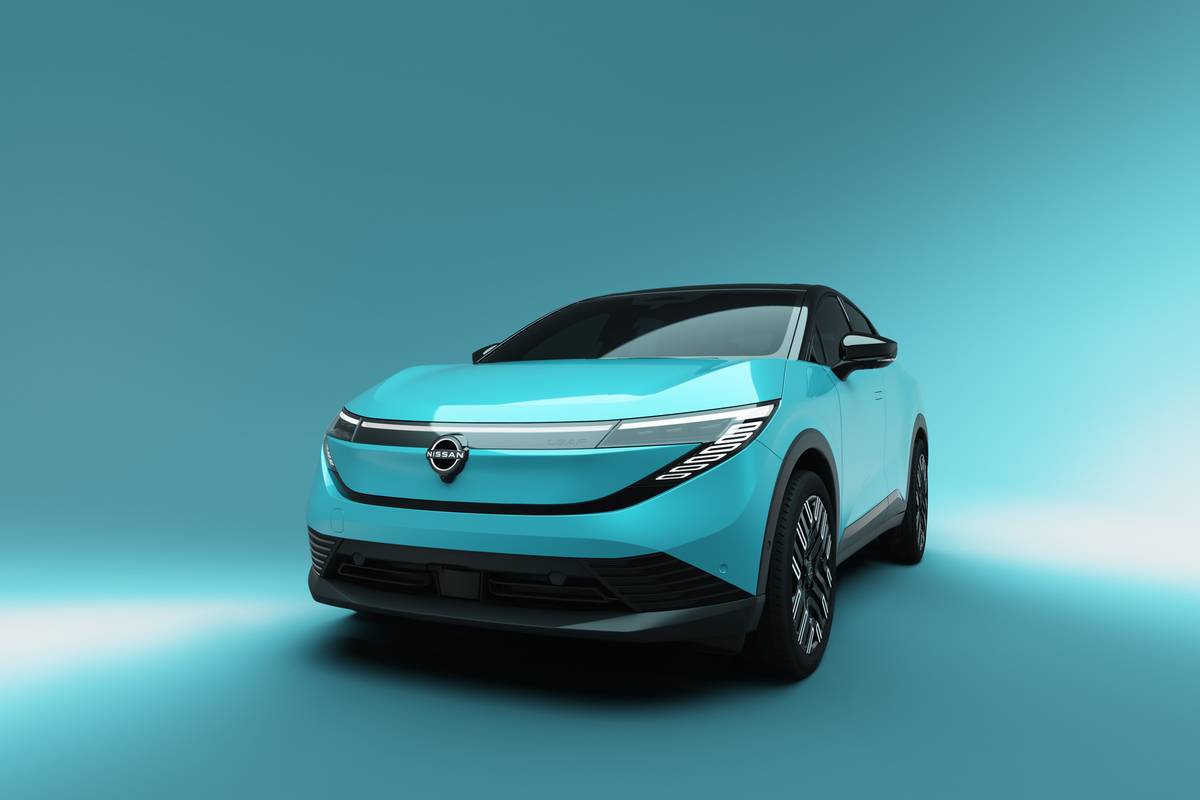chicagotribune.com's view
The entry-level luxury market is getting more crowded as Chrysler Corp. has begun shipping a new pair of image-conscious sedans–the Chrysler LHS and Chrysler 300M–to showrooms.
Both are built off the LH platform shared by the Dodge Intrepid and Chrysler Concorde, but with more of an emphasis on luxury in the LHS, more on luxury plus performance in the 300M.
The LHS will compete against the likes of the Lexus ES300, Infiniti I30, Cadillac Catera and Oldsmobile Aurora; the 300M against such nameplates as the Cadillac Seville STS and BMW 5-Series sedans.
Chrysler boasts its cars will be priced about $5,000 lower than the competition.
The LHS and 300M we tested over the rolling, hilly countryside here are different animals despite sharing the LH platform. The two look and behave differently to prevent charges of badge engineering. The LHS is the more sedate sedan, the 300M the more scintillating performer.
Both are aimed at younger drivers, at least younger than the 60-year-old-plus who migrate to the Chrysler Concorde. Chrysler hopes to attract 50-year-olds to the LHS, 40-year-olds to the 300M.
The LHS takes the honors for design. The grille is big and bold, standing out like a jewel. In back, the deck lid is low, the taillamps slim for a lean, clean look.
The 300M is about 11 inches shorter than the LHS to cater to younger import intenders who equate length with manageability. It also sports a bigger grille with air intakes above and below the front bumper, which leaves the impression the grille is trying to bite the bumper. In back, the deck lid is raised Seville style, which requires massive taillamps to fill in the sheet metal. Chrysler calls the look bold; we call it a bit bulky.
In the cabin, leg, head and arm room is excellent front and rear. For a more spacious feeling in back, the seat back is slanted to force the body to recline. In keeping with the luxury theme, seats are covered in leather and heated upfront.
Doors open wide for easy entry and exit. Deck lids use struts rather than space-robbing hinges to open wide and expose deep cargo holds with flat floors to handle luggage, groceries or golf clubs. Both cars have ski pass-throughs into the rear seat.
The LHS rear seat features a pull-down armrest with dual cupholders and a small stowage tray. The 300M has just a pull-down armrest. A small yet stylish analog clock in the dash is a nice luxury touch.
Both cars offer the same 3.5-liter, 253-horsepower, 24-valve, V-6 engine that obtains a noteworthy 18 miles per gallon city/27 m.p.g. highway. The 3.5 delivers 255 foot-pounds of torque at 3,950 r.p.m. and is designed for an off-the-line burst or a power boost when passing or merging.
However, while Chrysler boasts that the 3.5 is potent, we found it far better at passing and merging on level ground than climbing the hilly Georgia countryside. We needed to kick the pedal a little harder and hold it down a little longer to re ach the peaks.
LHS comes with 4-speed automatic transmission, 300M with Autostick, the automatic/manual that allows clutchless shifting. You drop the gearshift into Autostick and shift up or down by pressing the lever left or right. We appreciated Autostick most through the hills because it allows you to downshift to better manage flight up the steep grades.
Though the power plants are the same, each car’s character is defined by its steering and suspension. The LHS offers a more softly sprung touring suspension that provides smooth ride without lots of road disturbance coming back into the cabin. You get a little more body motion as a result and will swing a little wider in turns. And you’ll hear lots of tire noise coming back into the cabin.
The 300M suspension is firmer and with the optional handling package is outright stiff. The handling package controls body movement and reduces body motion and gives the 300M an attitude. The car sits flatter and is more agile moving in to and out of corners and turns.
If you like to pamper yourself, the fashionably luxurious LHS is the choice. It can be enjoyed cruising without having to tap the accelerator to impress those around you.
If you like frills, but drive more aggressively and spend more time pressing the gas than the brake, the 300M is the choice.
The LHS has variable-assist, speed-sensitive power steering that provides more assist in low-speed parking-lot maneuvers and less at highway speeds. The 300M, which has slightly firmer steering, doesn’t offer variable assist.
When you add the handling package to the 300M, the steering settings are very firm and feel more as if barbells have been attached to each side of the wheel.
The LHS and 300M come with 17-inch radials. When you upgrade the 300M to the handling package, you get 16-inch wider-profile treads with noticeably better grip for improved stability and balance in turns plus quicker steering response. You can’t get 16-inch tires, the handling package or Autostick on LHS.
Though they’re enjoyable, they have a few flaws, one being a very short seat bottom and a fairly stiff seat back that could leave you weary after long-distance driving.
The leather seats could be a tad more cushy. A cloth option wouldn’t seem out of line, though Chrysler insists it wouldn’t be in keeping with the luxury image.
And why the larger, sportier exhaust tips on the LHS and not the 300M? And why not a little exhaust rumble on what is supposed to be the sportier 300M?
Another gripe is that the LHS sports such a dramatic new design, it should have a new name. Let the older, more conservative buyer opt for Concorde and leave the LHS for the younger motorist.
If buyers were flocking to the old LHS–like they have been to the Jeep Grand Cherokee, Dodge Durango or Dodge Ram– there would be no reason to change the name. But they haven’t, so this would have been the perfect opportunity for a name change and the subsequent change of image that could have brought new buyers into the showrooms.
As for names, the 300M recalls the days of the Chrysler letter series, between 1955 and 1965. However, most who are old enough to remember the letter series, who appreciate that it meant luxury and performance and who remember that it came with a V-8, may be too old for the new model or resent a V-6.
The LHS and 300M come very well equipped. Four-wheel anti-lock brakes (larger four-wheel discs on the 300M), low-speed traction control (ABS is automatically applied when wheel slippage is detected starting from the line; all-speed traction control, which adds fuel shutoff when wheel slippage is detected in high-speed cornering, isn’t offered) and dual depowered front air bags are standard.
Also included in the base price are air conditioning, eight-way power leather seats with memory, heated power mirrors with memory, AM/FM stereo with compact-disc player and cassette, power-door locks that automatically engage when you s tart moving/disengage when you stop, rear-window defogger, keyless entry, compass, outside temperature reading and a driver’s seat glide function that automatically moves it rearward by 2.2 inches when you stop the car to make for easier exit. Glide worked fine on the 300M we drove, but the seat never moved on the LHS we tested.
The LHS starts at $28,400, the 300M at $28,300. A special 36-month lease also is being offered: $389 a month on the 300M, $399 a month on the LHS, both with $1,500 down.
Other than a power sunroof for $795 and $595 for freight, you don’t need to add anything else to drive away in a fully equipped vehicle unless you want the more decorative chrome wheels for $600 or $215 for a 320-watt upgrade from 240 watts on the sound system. And if you go for the 300M, add $255 for the handling package.
1999 Chrysler LHS
© 1998 Chicago Tribune Wheelbase: 113 inches Length: 207.7 inches Engine: 3.5-liter, 24-valve, 253-h.p. V-6 Transmission: 4-speed automatic Fuel economy: 18 m.p.g. city/27 m.p.g. highway Base price: $28,400 Price as tested: $28,400. Add $595 for freight. Pluses: Styling masterpiece with more personality and character than a rival Lexus ES300–and for less money. Loaded with standard equipment. About only option you’ll need is $795 power sunroof. ABS, traction control, dual air bags standard. Spacious cabin and trunk. Minuses: Short front-seat bottoms and stiff seat backs. The 3.5 needs a breath of air on steep inclines. With change of design came change of character and with it should have come change of name. One more $30,000 entry-level luxury car in a crowded market. >>
Latest news



